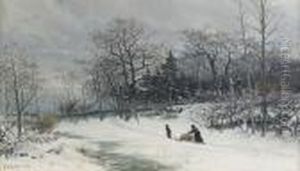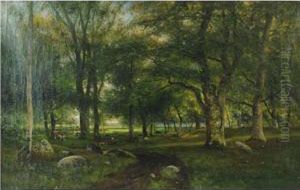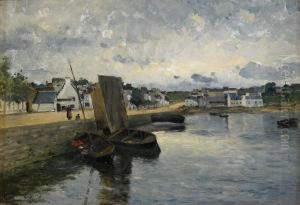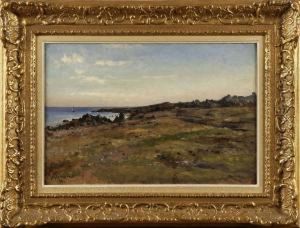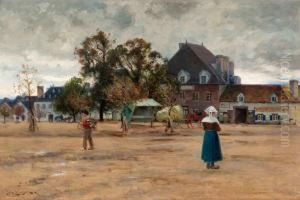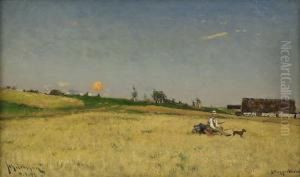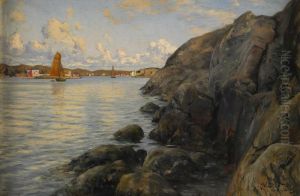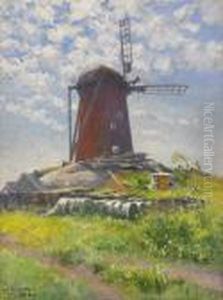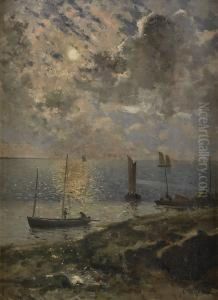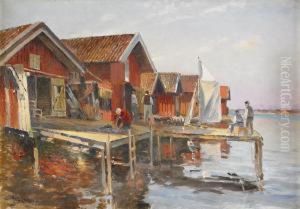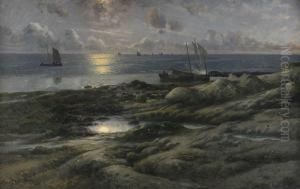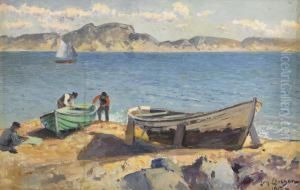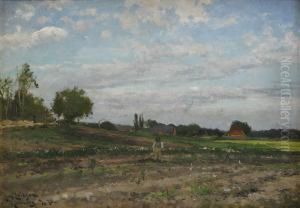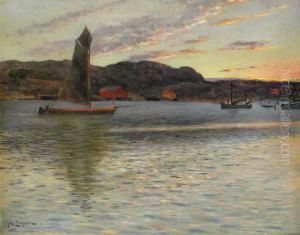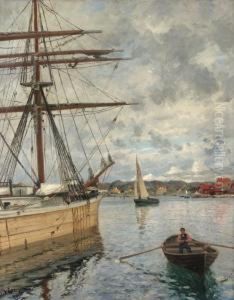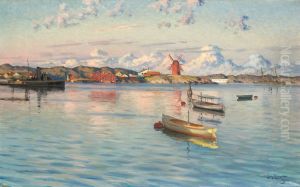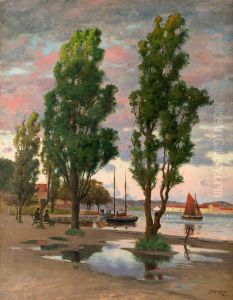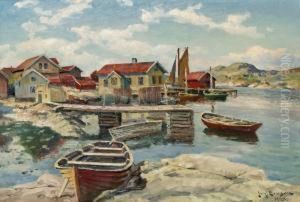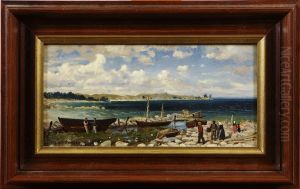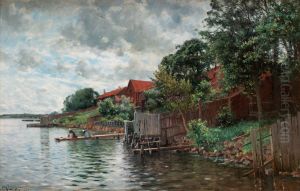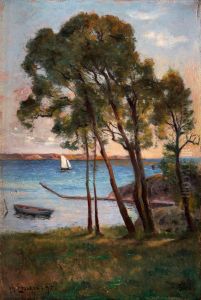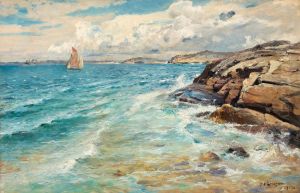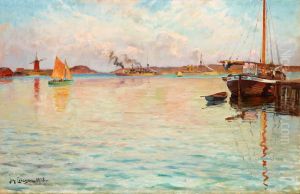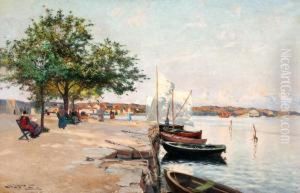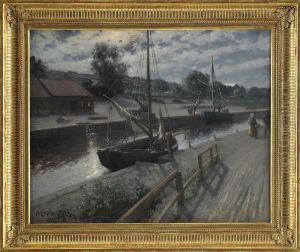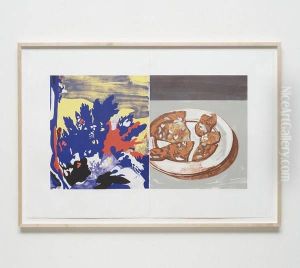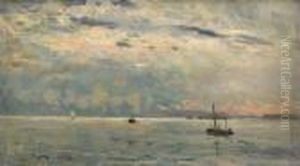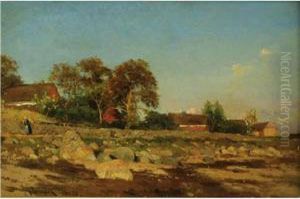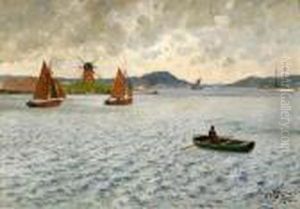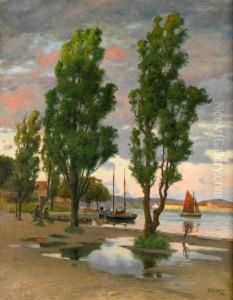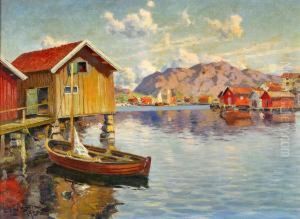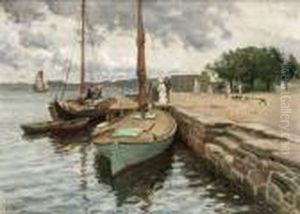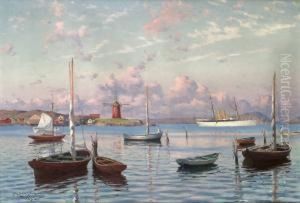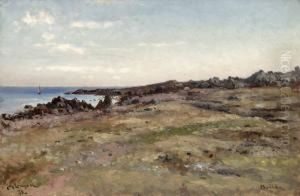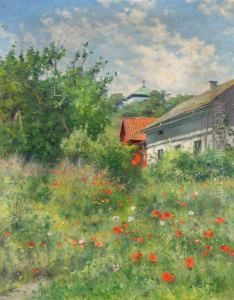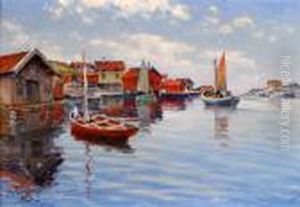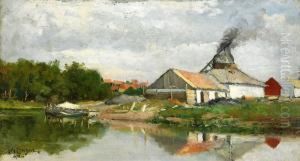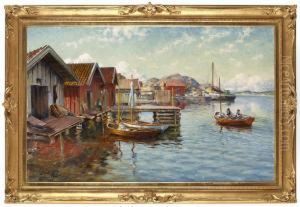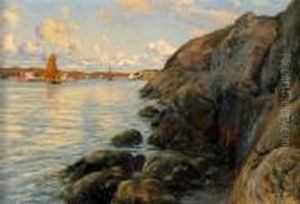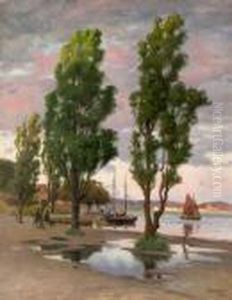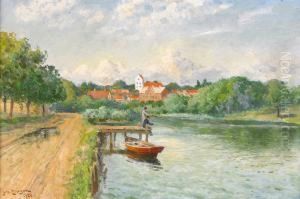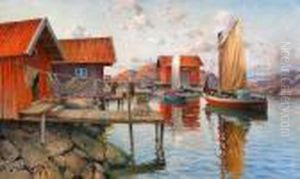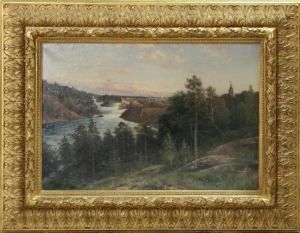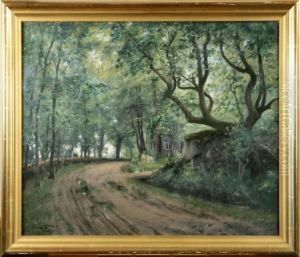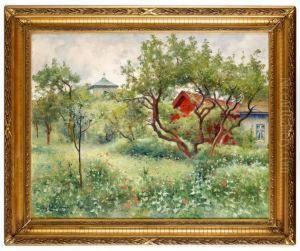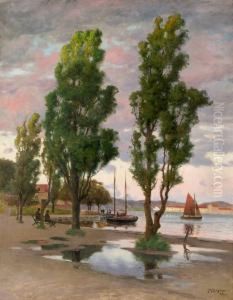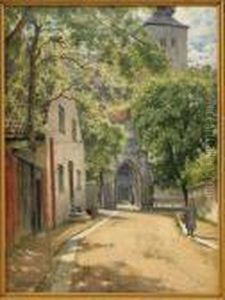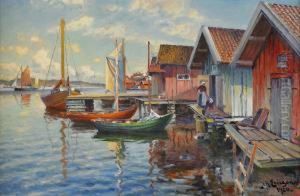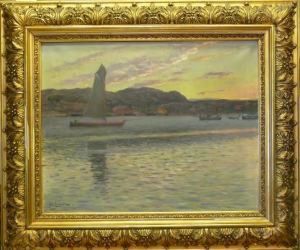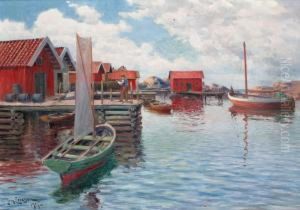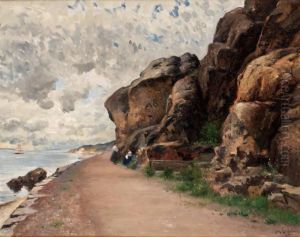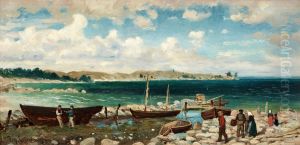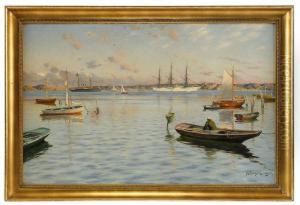Johan Erik Ericson Paintings
Johan Erik Ericson was a Swedish painter known for his landscape paintings and his association with the Düsseldorf school of painting. Born on July 17, 1849, in Arboga, Sweden, Ericson displayed an early talent for art, which led him to study at the Royal Swedish Academy of Arts in Stockholm. In pursuit of further artistic development, he moved to Düsseldorf, Germany, which was a major center for art and painting during the mid-19th century.
While in Düsseldorf, Ericson honed his skills and was significantly influenced by the artistic styles and techniques prevalent in the region. The Düsseldorf school of painting was known for its meticulous attention to detail, emphasis on color, and romantic treatment of landscape, which often reflected a sense of national identity and romanticized view of nature.
Ericson's work typically featured the natural beauty of the Swedish landscape. His paintings often depicted serene rural scenes, forests, and waterways, capturing the changing seasons and the play of light and shadow. He was particularly adept at rendering atmospheric effects and the Nordic light, which contributed to the evocative mood of his landscapes.
After spending several years in Germany, Ericson returned to Sweden, where he became an established artist. His work was well received, and he participated in numerous exhibitions. Throughout his career, Ericson remained committed to landscape painting, although he also painted still lifes and occasionally portraits.
Johan Erik Ericson's contribution to Swedish art was significant in that he brought back influences from the European continent and integrated them with the local scenery and artistic traditions. His landscapes resonate with a sense of tranquility and are marked by a poetic, almost lyrical quality.
Ericson's work is represented in various Swedish museums, including the Nationalmuseum in Stockholm. He continued to paint and exhibit his work until his death on January 21, 1925, in Djursholm, Sweden. His legacy lives on as one of the notable Swedish landscape painters of the late 19th and early 20th centuries, and his paintings continue to be appreciated for their beauty and technical skill.
